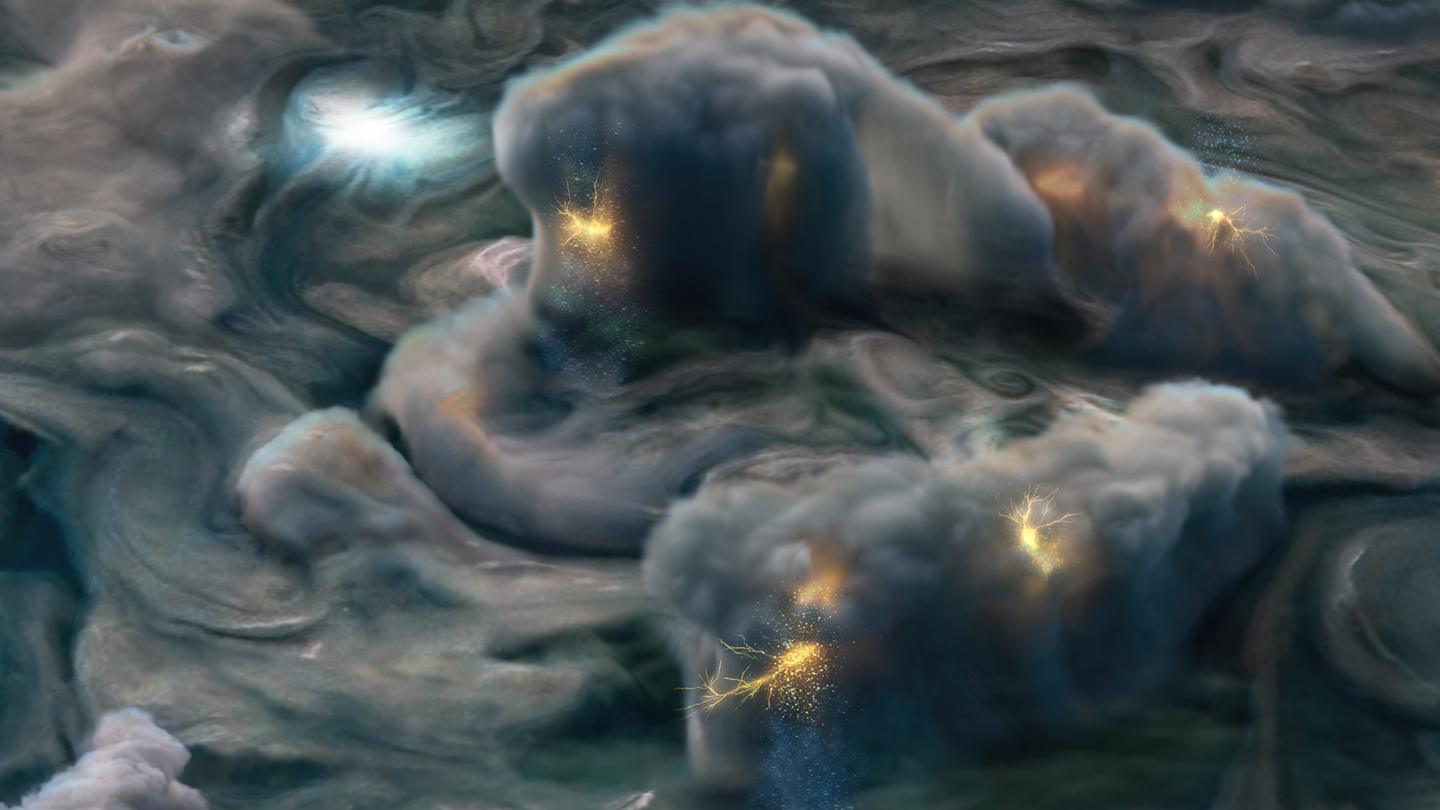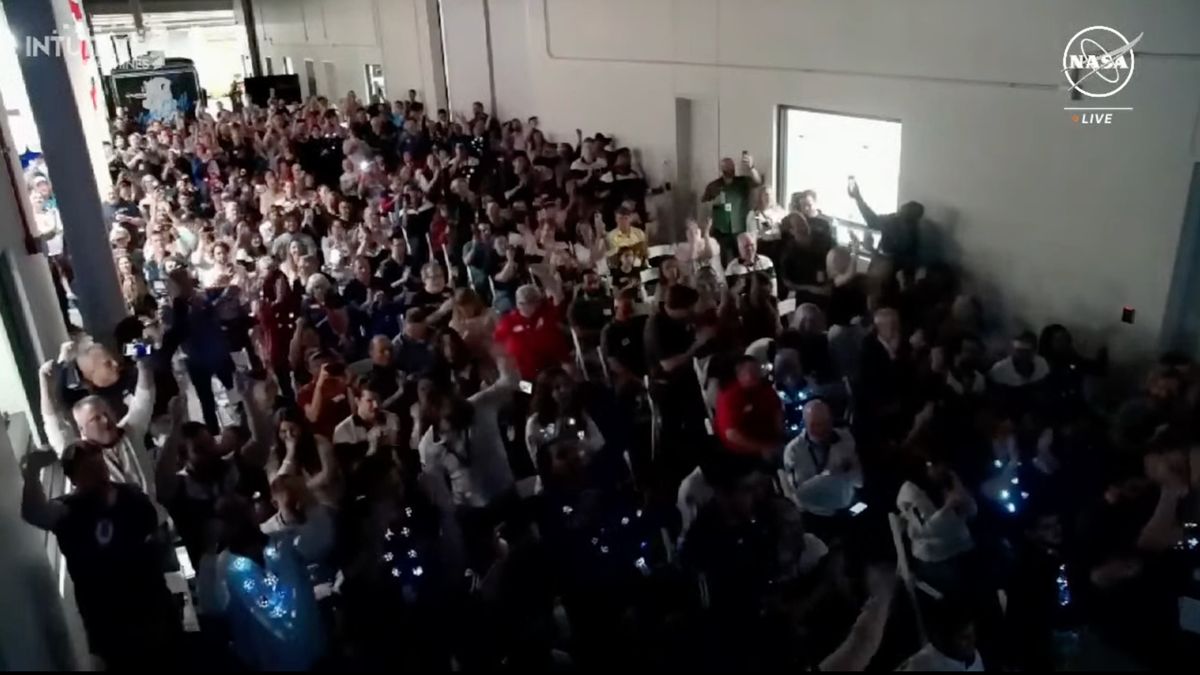On Jupiter, lightning jerks and jolts a lot like it does on Earth.
Jovian lightning emits radio wave pulses that are typically separated by about one millisecond, researchers report May 23 in Nature Communications. The energetic prestissimo, the scientists say, is a sign that the gas giant’s lightning propagates in pulses, at a pace comparable to that of the bolts that cavort through our own planet’s thunderclouds. The similarities between the two world’s electrical phenomena could have implications for the search for alien life.
Arcs of lightning on both worlds appear to move somewhat like a winded hiker going up a mountain, pausing after each step to catch their breath, says Ivana Kolmašová, an atmospheric physicist at the Czech Academy of Sciences in Prague. “One step, another step, then another step … and so on.”
Here on Earth, lightning forms as turbulent winds within thunderclouds cause many ice crystals and water droplets to rub together, become charged and then move to opposite sides of the clouds, progressively generating static electrical charges. When the charges grow big enough to overcome the air’s ability to insulate them, electrons are released — the lightning takes its first step. From there, the surging electrons will repeatedly ionize the air and rush into it, lurching the bolt forward at an average of hundreds of thousands of meters per second.
Scientists have suggested that superbolts observed in Jovian clouds might also form by collisions between ice crystals and water droplets (SN: 8/5/20). But no one knew whether the alien bolts extended and branched in increments, as they do on Earth, or if they took some other form.
For the new study, Kolmašová and her colleagues used five years of radio wave data collected by NASA’s Juno spacecraft (SN: 12/15/22). Analyzing hundreds of thousands of radio wave snapshots, the team found radio wave emissions from Jovian lightning appeared to pulse at a rate comparable to that of Earth’s intracloud lightning — arcs of electricity that never strike ground.
If bolts extend through Jupiter’s water clouds at a similar velocity as they do in Earth’s clouds, then Jovian lightning might branch and extend in steps that are hundreds to thousands of meters long. That’s comparable in length to the jolted strides of Earth’s intracloud lightning, the researchers say.
“That’s a perfectly reasonable explanation,” says atmospheric physicist Richard Sonnenfeld of the New Mexico Institute of Mining and Technology in Socorro, who wasn’t involved in the study. Alternatively, he says, the signals could be produced as pulses of electrical current propagate back and forth along tendrils of lightning that have already formed, rather than from the stop-and-go advancements of a new bolt. On Earth, such currents cause some bolts to appear to flicker.
But stop and go seems like a sound interpretation, says atmospheric physicist Yoav Yair of Reichman University in Herzliya, Israel. Kolmašová and her colleagues “show that if you’re discharging a cloud … the physics remains basically the same [on Jupiter as on Earth], and the current will behave the same.”
If that universality is real, it could have implications for the search for life elsewhere. Experiments have shown that lightning strikes on Earth could have smelted some of the chemical ingredients needed to form the building blocks of life (SN: 3/16/21). If lightning is discharging in a similar way on alien worlds, Yair says, then it could be producing similar ingredients in those places too.














